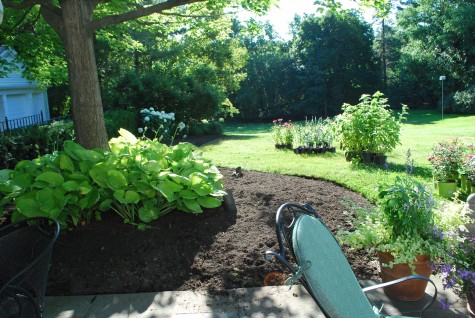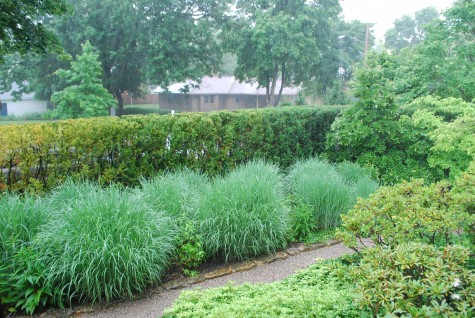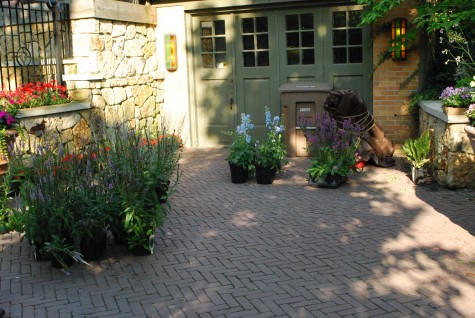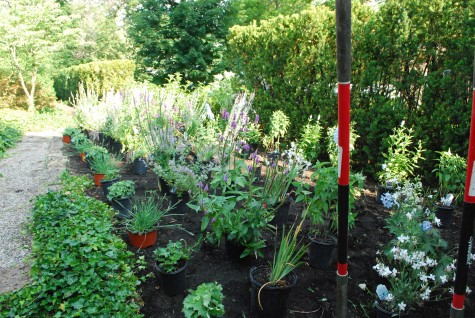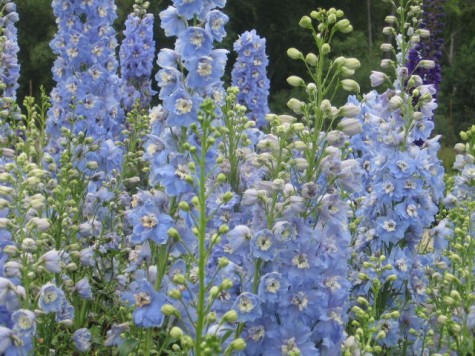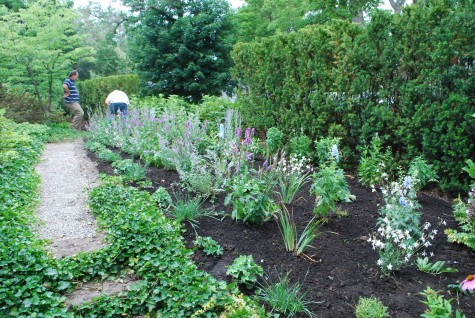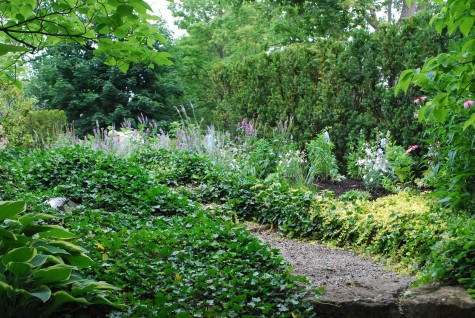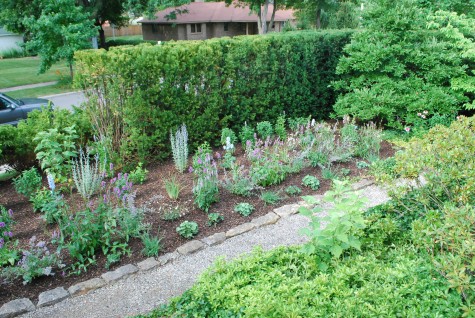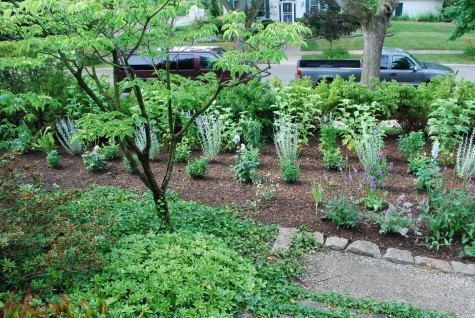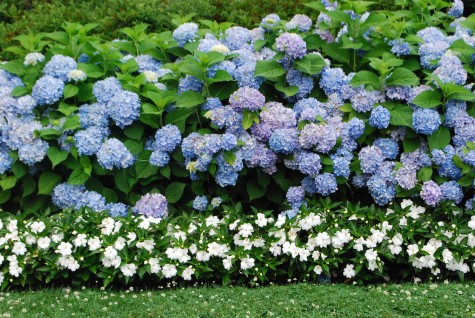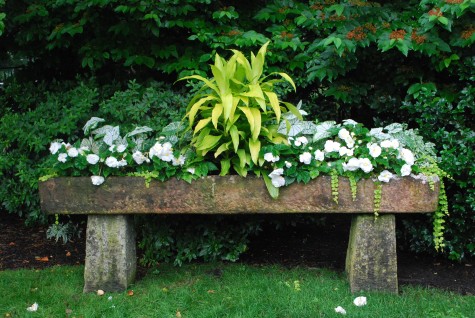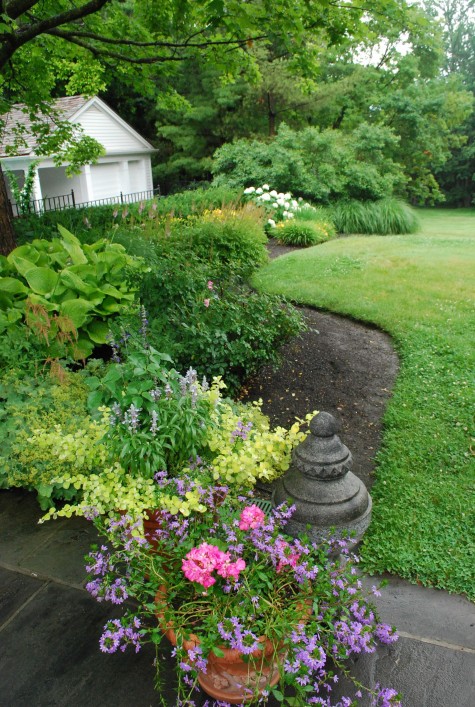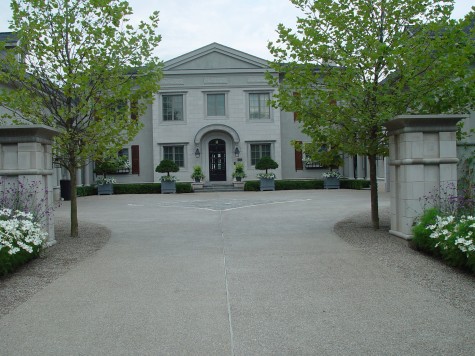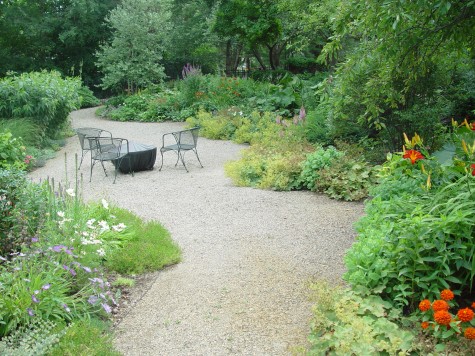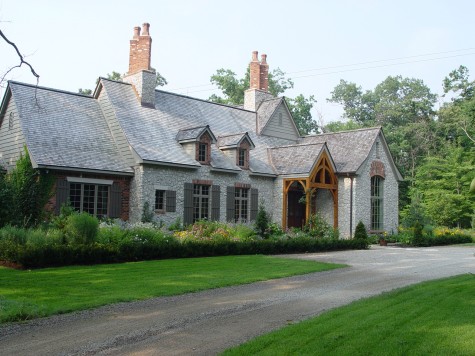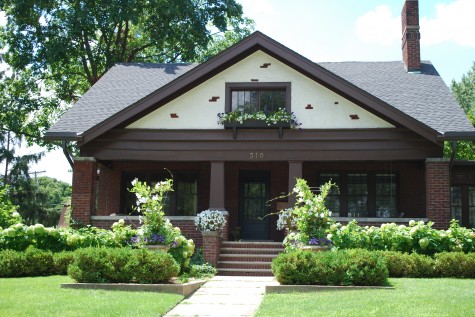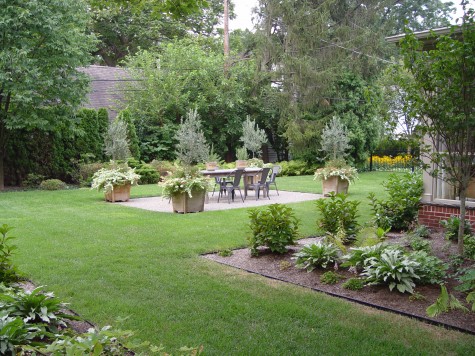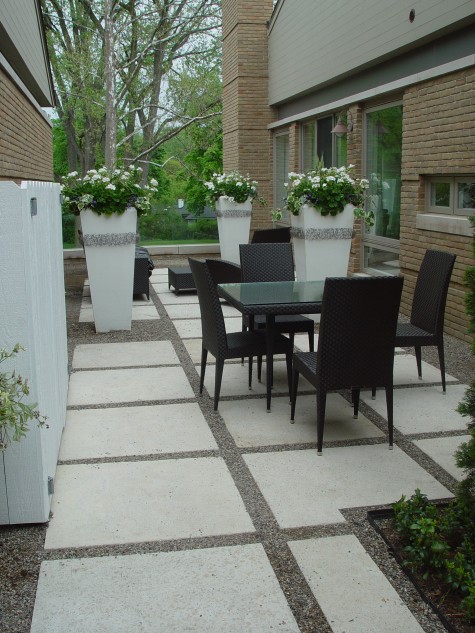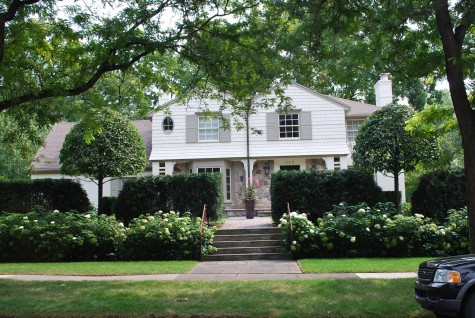I did plant a second perennial garden this week-however many days ago I posted about the prep. Steve did a great job of prepping the soil-we usually add plant mix, a mix of topsoil and compost- to garden soil. I like perennial beds to be pouffy. Crowned in the center. So many perennial plants are extremely hardy, given good drainage. A perennial bed that sits lower than the grade of the lawn will have problems. 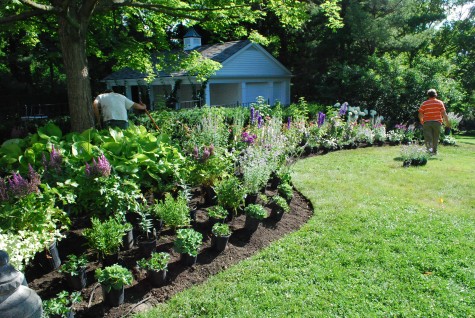 This picture makes clear how this perennial sits higher than the lawn. Perennials swimming in waterlogged soil will give up without much of a fight. If I had my choice, no ground in a landscape would be perfectly flat. Every surface would have positive drainage, in addition surface drainage. The best part of landscaping a new house-I have a good relationship with that person on the bulldozer that sets the grades. Raised boxes specifically built to grow vegetables-this is all about drainage. Lest I spend too much time on the obvious, I will simply state that water runs downhill. Sculpt the ground accordingly.
This picture makes clear how this perennial sits higher than the lawn. Perennials swimming in waterlogged soil will give up without much of a fight. If I had my choice, no ground in a landscape would be perfectly flat. Every surface would have positive drainage, in addition surface drainage. The best part of landscaping a new house-I have a good relationship with that person on the bulldozer that sets the grades. Raised boxes specifically built to grow vegetables-this is all about drainage. Lest I spend too much time on the obvious, I will simply state that water runs downhill. Sculpt the ground accordingly.
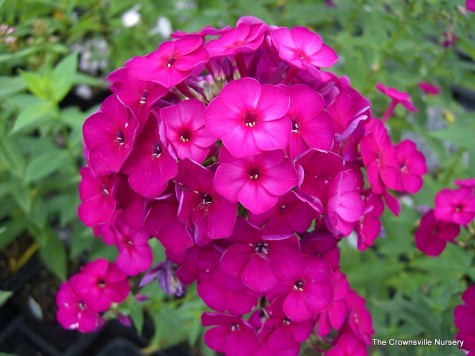 The photograph of this phlox Nicky is courtesy of the Crownsville Nursery. The darkest carmine/purple of all the summer phlox, it resists mildew and disease such that you would want to grow it. The smell of phlox in the summer-divine. I like the color, and I like the vigor. This phlox is going into this perennial garden.
The photograph of this phlox Nicky is courtesy of the Crownsville Nursery. The darkest carmine/purple of all the summer phlox, it resists mildew and disease such that you would want to grow it. The smell of phlox in the summer-divine. I like the color, and I like the vigor. This phlox is going into this perennial garden.
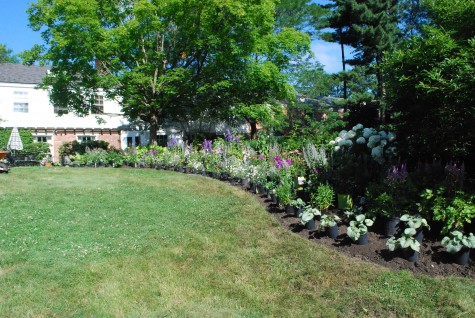 We refined the curve on the edge of this perennial bed. Perennial beds without edger strip ask for an edger/gardener of great skill. Any bed edge that curves needs a long slow curve with no flat spots. If you are having trouble determining a curve, get your hose out. Play with that hose until you get graceful curves-and then cut the edge. Alternately, but a stake in the ground, and tie a loosely tied string to it, and mark an arc as long as you need. Finding the right spot to put the stake just takes a little experimentation.
We refined the curve on the edge of this perennial bed. Perennial beds without edger strip ask for an edger/gardener of great skill. Any bed edge that curves needs a long slow curve with no flat spots. If you are having trouble determining a curve, get your hose out. Play with that hose until you get graceful curves-and then cut the edge. Alternately, but a stake in the ground, and tie a loosely tied string to it, and mark an arc as long as you need. Finding the right spot to put the stake just takes a little experimentation.
 The Vision series of astibles are amazing. They are vigorous growers. The colors are clear, and striking. This pink, purple, lavender and white perennial garden got a big dose of these astilbes. Should you have some part shade areas, consider Visions pink or red. This garden begins and ends with some shadier spots. I plan to mass both areas with lady’s mantle, Jack Frost brunnera, and this astilbe.
The Vision series of astibles are amazing. They are vigorous growers. The colors are clear, and striking. This pink, purple, lavender and white perennial garden got a big dose of these astilbes. Should you have some part shade areas, consider Visions pink or red. This garden begins and ends with some shadier spots. I plan to mass both areas with lady’s mantle, Jack Frost brunnera, and this astilbe.
 I have never been convinced that Gaura is hardy in my zone, but here I am planting them. They are willowy, and beautiful in a very understated way.
I have never been convinced that Gaura is hardy in my zone, but here I am planting them. They are willowy, and beautiful in a very understated way.
 My love affair with lilies is at least 30 years old. That is a story appropriate for another post. But this week, the Oriental hybrid lily known as Acapulco got my attention. Where the idea came from to plant lilies in this garden was driven by the small space in question. Bulb lilies take up very little space, but add lots of color to any perennial garden. They require good drainage to persist; they sometimes need to be staked. The Lily Garden offers a wide selection of lily bulbs by mail.
My love affair with lilies is at least 30 years old. That is a story appropriate for another post. But this week, the Oriental hybrid lily known as Acapulco got my attention. Where the idea came from to plant lilies in this garden was driven by the small space in question. Bulb lilies take up very little space, but add lots of color to any perennial garden. They require good drainage to persist; they sometimes need to be staked. The Lily Garden offers a wide selection of lily bulbs by mail.
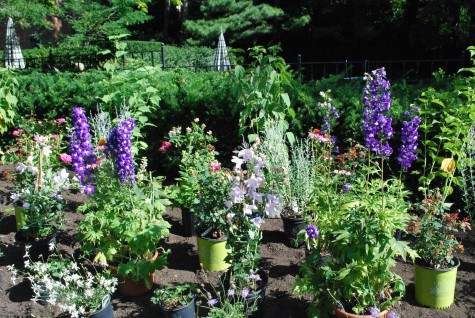 The Magic Fountains delphiniums made a big statement the day they got planted. They are fairly easy to grow, and are quite vigorous. Their shorter stature makes it easier to gracefully stake the heavy flower stalks. Double pink knockout roses alternated with white hardy hibiscus and planted behind the delphiniums. Pink platycodon, and pink echinacea are alternated with Russian sage. On the border, Blue Mist scabiosa, Geranium Rozanne, and lady’s mantle.
The Magic Fountains delphiniums made a big statement the day they got planted. They are fairly easy to grow, and are quite vigorous. Their shorter stature makes it easier to gracefully stake the heavy flower stalks. Double pink knockout roses alternated with white hardy hibiscus and planted behind the delphiniums. Pink platycodon, and pink echinacea are alternated with Russian sage. On the border, Blue Mist scabiosa, Geranium Rozanne, and lady’s mantle.
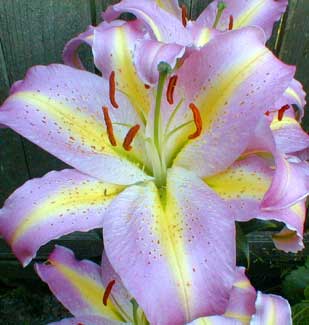 The Oriental hybrid lily Tom Pouce flowers are orchid pink with lemon yellow streaks. This is a very showy flower indeed-not at all for the faint of heart. Flowers that are attention getting are good in gardens viewed from a distance. Who would not want to walk up to insepct a flower like this at close range? Subtle flowers are best up close, where they can be better appreciated.
The Oriental hybrid lily Tom Pouce flowers are orchid pink with lemon yellow streaks. This is a very showy flower indeed-not at all for the faint of heart. Flowers that are attention getting are good in gardens viewed from a distance. Who would not want to walk up to insepct a flower like this at close range? Subtle flowers are best up close, where they can be better appreciated.
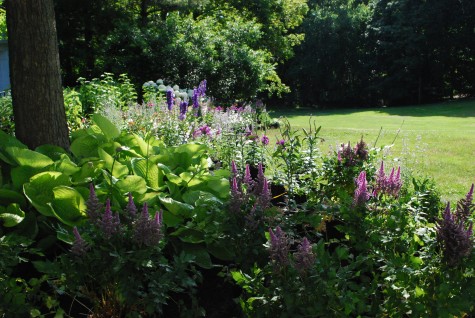
Though the perennials have not been planted yet, it is easy to imagine what the garden will look like once it begins to grow in. The white flowers of the Annabelle hydrangea we left in the garden will draw the eye towards the back of the garden. The very large existing clump of Sum and Substance hosta in the foreground provide wecome green relief to the mix of colors all around this. My client likes pink, purple and white. I think this garden will provide her with a summer garden she will really enjoy.
